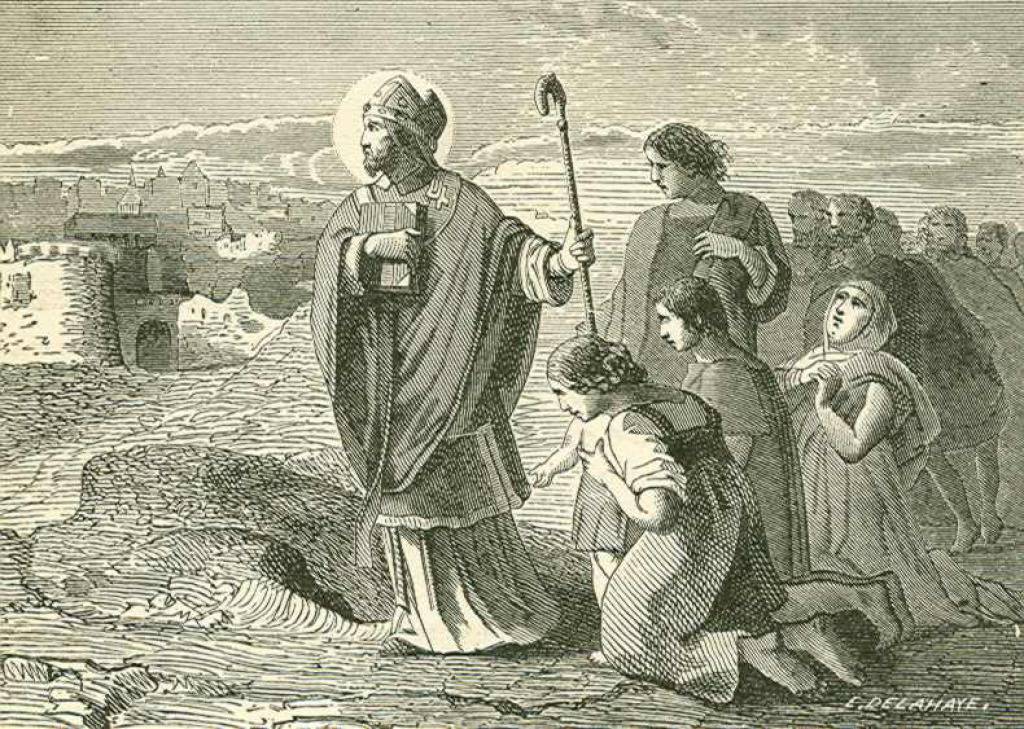 Saint Finbarr was born in Connaught in about 550. He was the son of an artisan, Amergin, and a lady of the Irish royal court. he was baptized Lochan and was educated at Kilmacahil, Kilkenny, where the monks named him Fionbarr (white head) because of his light hair. He went on a pilgrimage to Rome with some of the monks, visiting St. David in Wales on the way back.
Saint Finbarr was born in Connaught in about 550. He was the son of an artisan, Amergin, and a lady of the Irish royal court. he was baptized Lochan and was educated at Kilmacahil, Kilkenny, where the monks named him Fionbarr (white head) because of his light hair. He went on a pilgrimage to Rome with some of the monks, visiting St. David in Wales on the way back.He evangelized Gowran, Coolcashin and Aghaboe, and founded a school at Eirce. We are told that he preached in Scotland before coming to southern Ireland where he lived as a hermit on a small island in a hermitage at Gougane Barra, where a beautiful replica of Cormac's chapel has been recently been erected in his honor. The hermitage is one of the best preserved monuments in the Diocese. The walls still stand and are 14 feet thick. There are eight cells, each seven feet wide by ten feet deep. The courtyard is fifty feel square.
On another visit to Rome the Pope wanted to consecrate Finbarr as a bishop. But because of a vision, he refused the Pope and told him that God has reserved that honor to himself. Supposedly, Finbarr was consecrated from heaven and returned to Ireland.
In 606 Finbarr founded a monastery near the River Lee. His monastery became famous in southern Ireland and attracted many disciples. Eventually, the City of Cork grew up around Finbarr's monastery. Over the years, the area became so prosperous, that it attracted the attention of Viking sea pirates, who raided and burned the infant city, but returned in later years to settle there and trade.
Many extravagant miracles are attributed to Finbarr. Legend has it that his hand took on a visible radiance that caused him to wear a glove for the rest of his life.
Finbarr died at Cloyne on September 25, 623. They say that when he died the sun did not set for two weeks. His body was then taken to Cork where it was interred in the cathedral he built, where it remained until 1089 when the city was raided and plundered and his relics were sacrilegiously carried away. He is considered the first Bishop of Cork.
